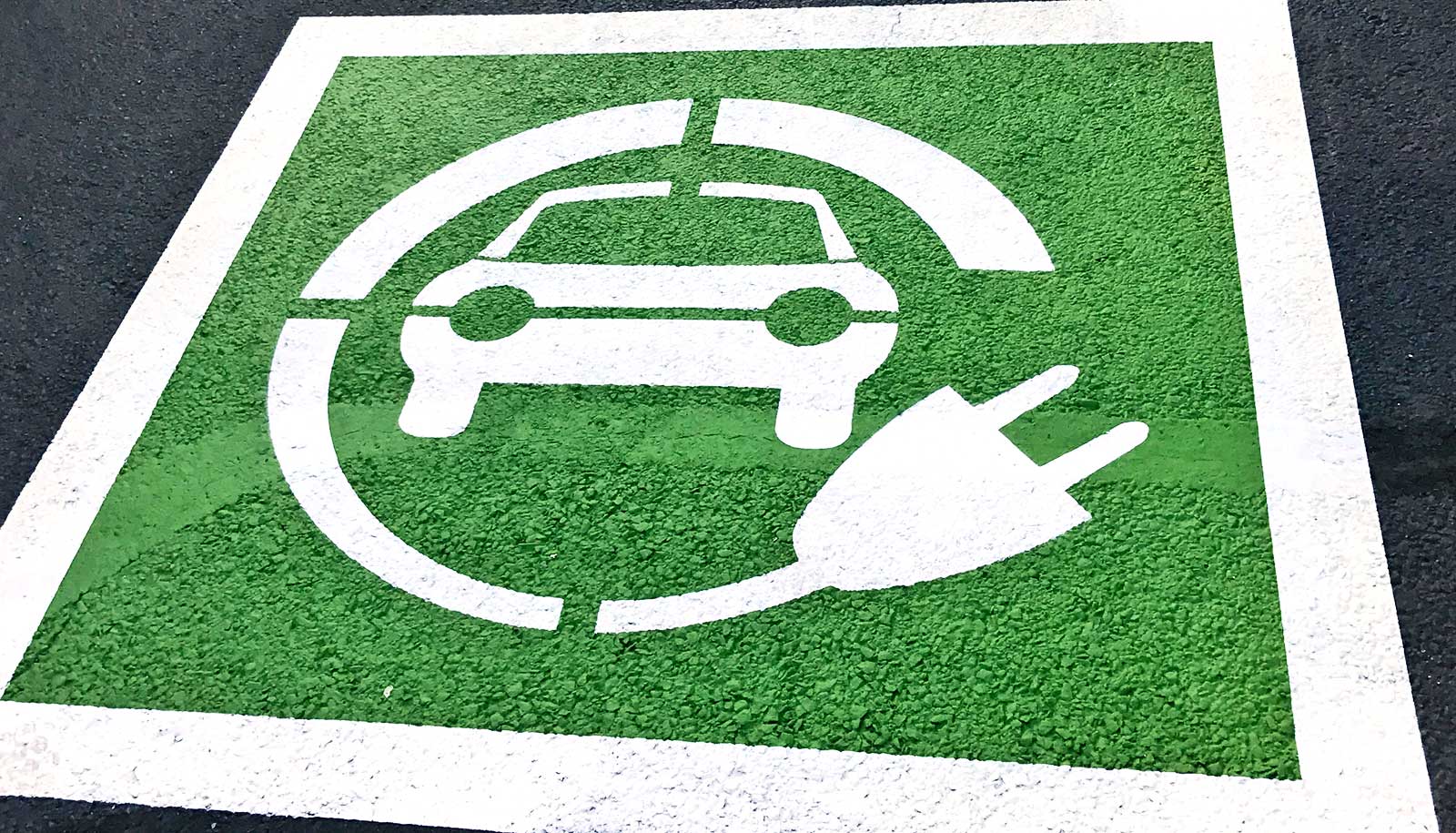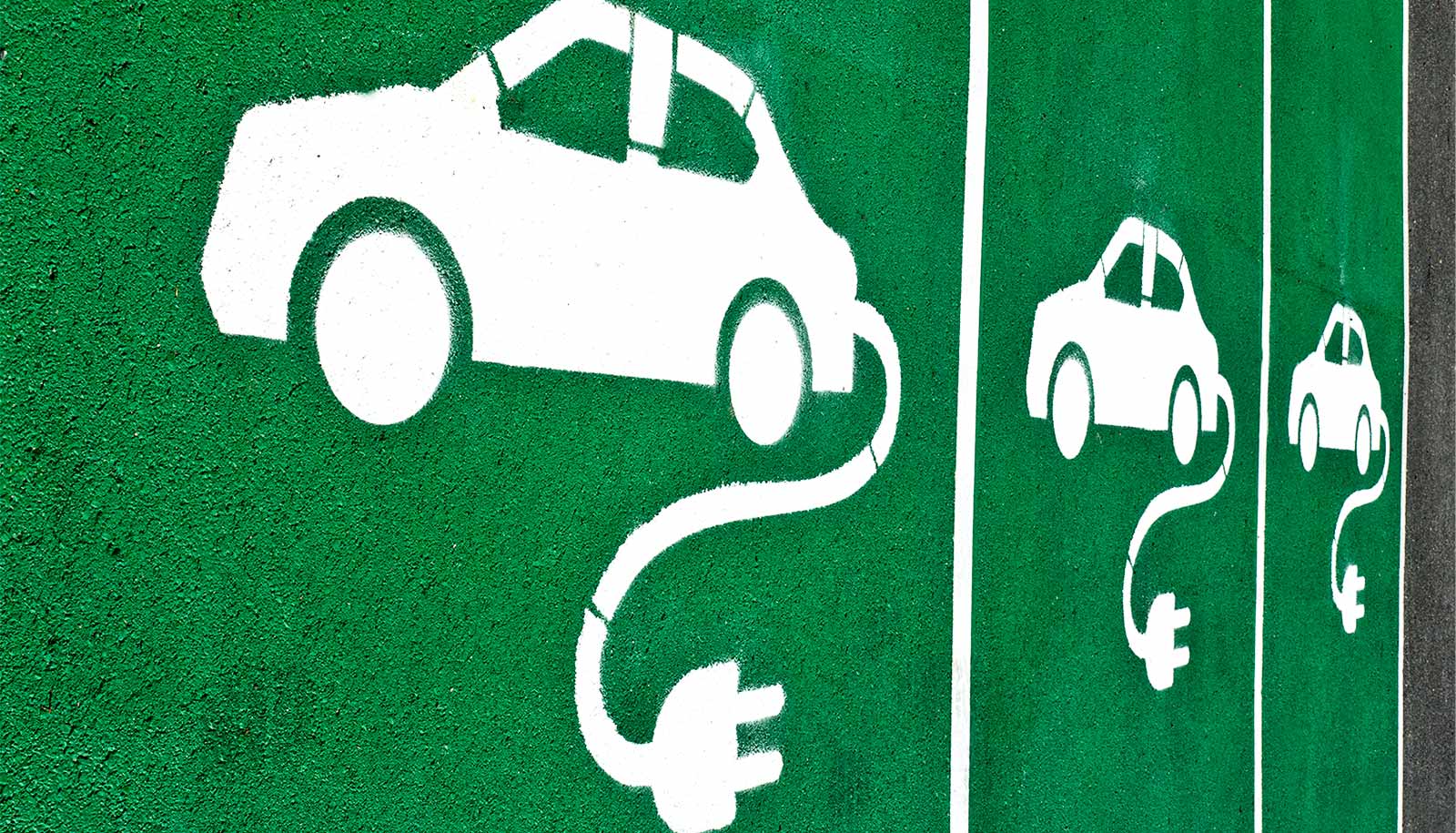A new model suggests ways to sell surplus energy from electric vehicles to local power grids.
American homeowners with solar panels can sell the surplus electricity they generate back to their local grids. Should electric vehicle (EV) owners be able to do the same thing?
The researchers show how so-called V2G (vehicle-to-grid) technology can achieve grid stability and renewable energy storage—and save vehicle owners potentially $120 to $150 a year.
The paper appears in ACS Sustainable Chemical & Engineering.
The idea is gaining traction in parts of Canada and Europe as a way to balance the increasing mismatch in electrical usage and generation that occurs as weather-dependent solar and wind energy sources come online. Renewable energy sources, even though they’re better for the planet, cannot replace traditional power because they aren’t always available. The ability to store energy in a power-station-sized battery can solve this problem. But where can you find that kind of battery capacity? In parked EVs.
To help gauge the feasibility of V2G systems, Heta Gandhi, a PhD student in the lab of Andrew White, an associate professor of chemical engineering at Rochester’s Hajim School of Engineering and Applied Sciences, has developed a computational model that takes into account factors not previously considered. For example, her model considers the degradation of batteries, as well as a wide range of commuter driving times, distances, and other scenarios.
She and White, her coauthor, used the computational model to develop a cost-benefit analysis for V2G participants in six major US cities. The work helps researchers and engineers know how design decisions affect people using their own vehicles in V2G, an important consideration to achieve higher levels of renewable energy.
The analysis showed that:
- Potential annual savings for V2G users in Boston, Chicago, Phoenix, New York City, Washington, DC, and San Francisco ranged from $120 to $150 a year, with much of the variation reflecting differences in local variable electricity rates.
- Letting commuters set their own threshold selling price is crucial to making a V2G scheme profitable for commuters.
- Increasing both charging efficiency and the rate of battery charging are more important than developing lower price lithium-ion batteries in making V2G schemes profitable.
All findings were based on data gathered prior to the COVID-19 pandemic, which profoundly altered peoples’ work and driving habits. But there are already signs of a resurgence in travel, and increasing numbers of people returning to work, Gandhi notes. Moreover, the increasing use of both EVs and renewable energy in this country suggest that V2G will eventually be an important consideration for US policymakers.
“This paper, I think, is very valuable if we actually try to pursue a route where people can discharge electricity to their vehicles and sell it to the grid,” Gandhi says. “It will require extra infrastructure. However, V2G offers an excellent solution for energy storage and grid stability. So why not do it here?”
“An electric vehicle is already connected to the grid when you use a public charger, or any charger for that matter,” Gandhi explains. “If you make [a charger] bidirectional it can also transfer energy from the vehicle to the grid.”
A typical V2G operation works like this:
- The EV battery is charged during off-peak hours, typically in the middle of the night.
- The user commutes to work and uses a fraction of the battery capacity while doing so.
- While the user is at work, the idle car is plugged into the grid at peak hours and electricity is sold back to the grid if the grid operator needs it.
- Some battery capacity is reserved to travel back home.
- The cycle is repeated.
The model described in this paper advances previous modeling in its extensive use of data from the US Census Bureau and other sources. Gandhi then used stochastic modeling to randomly sample across all the data to account for as many variables as possible, such as variations in individuals’ commuter routes and distances, working patterns, and so forth. The model considers historic electricity rates and calculates battery degradation costs based on these variables.
“We did not stick to just one user or assume that all users will commute 10 miles each day and they all work from 8 to 5, because that’s not the case,” Gandhi says.
The University of Rochester’s Center for Integrated Research Computing provided computational resources and technical support.
Source: University of Rochester



